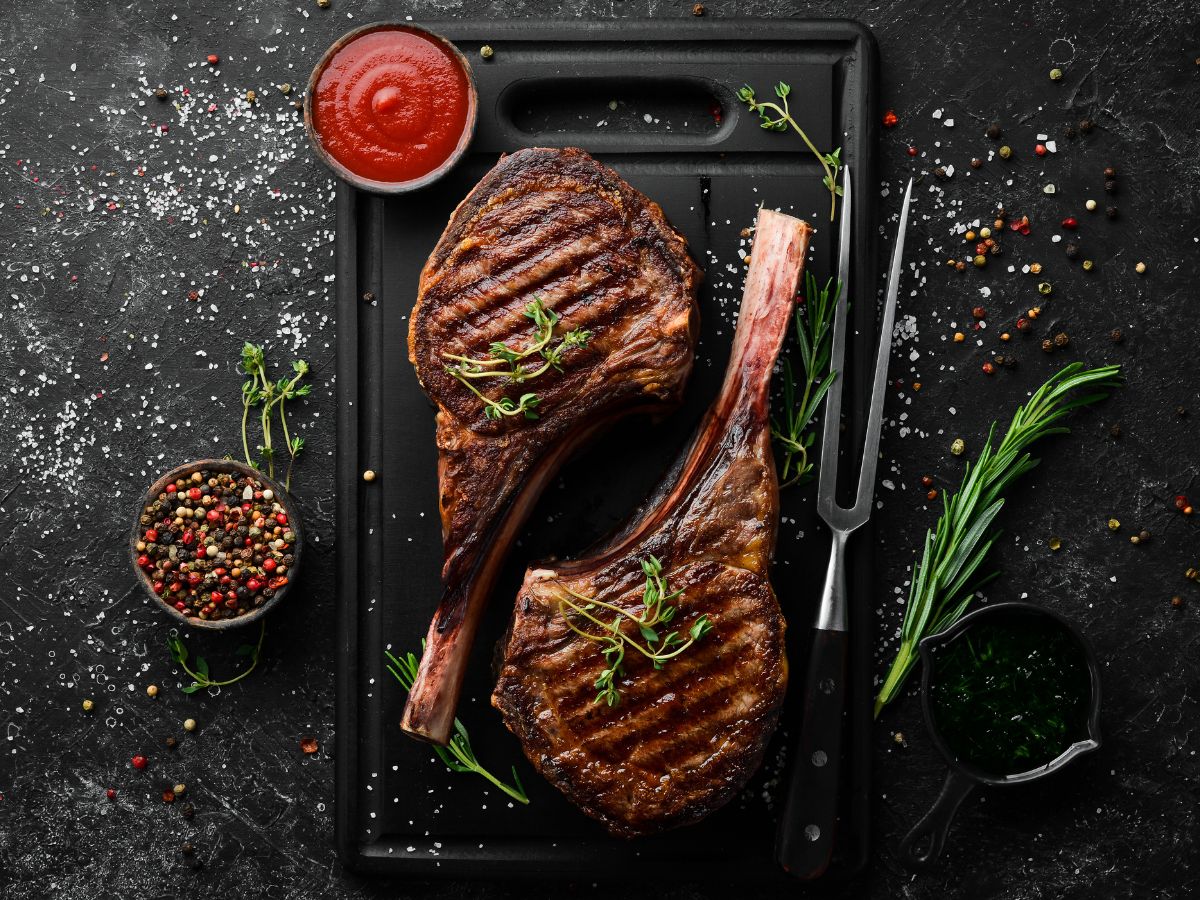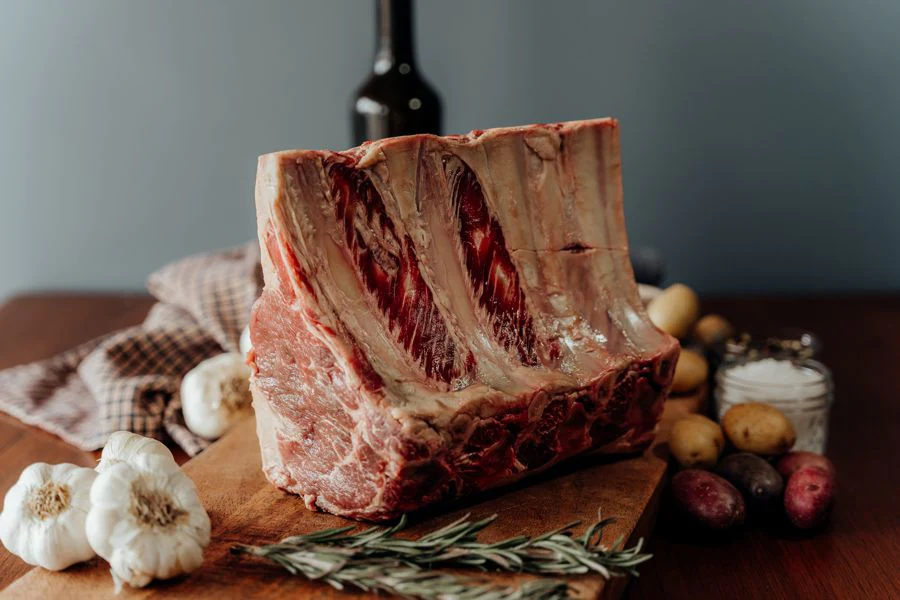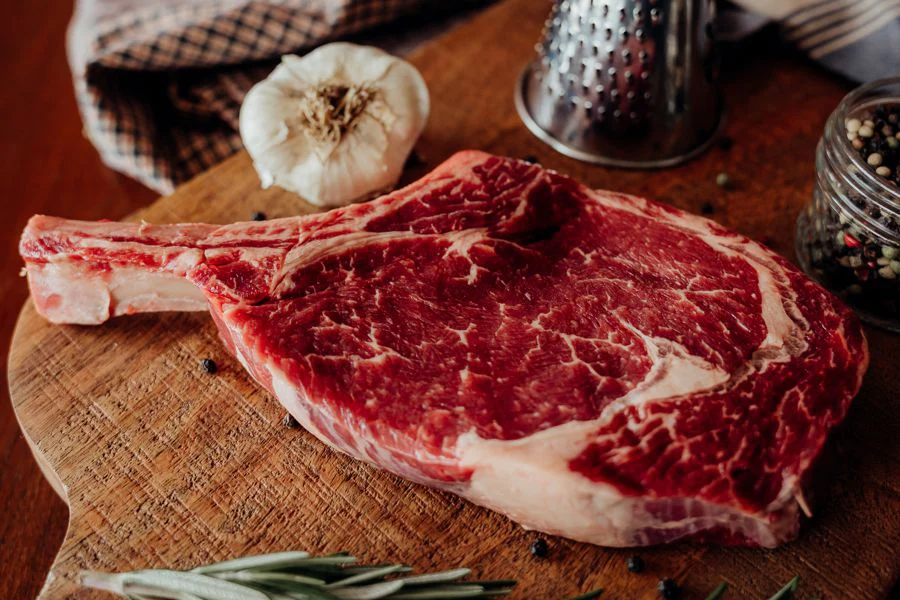Primal Edge Health participates in the Amazon Services LLC Associates Program and other affiliate programs and therefore, may collect a share of sales or other compensation from the links on this page. This comes at no additional cost to you, and all the prices and availability are accurate at the time of publishing.
Rib roast and ribeye are popular entrees that often steal the show for big holiday meals. But, which is the best entree between rib roast vs. ribeye, especially if you have a crowd to feed?
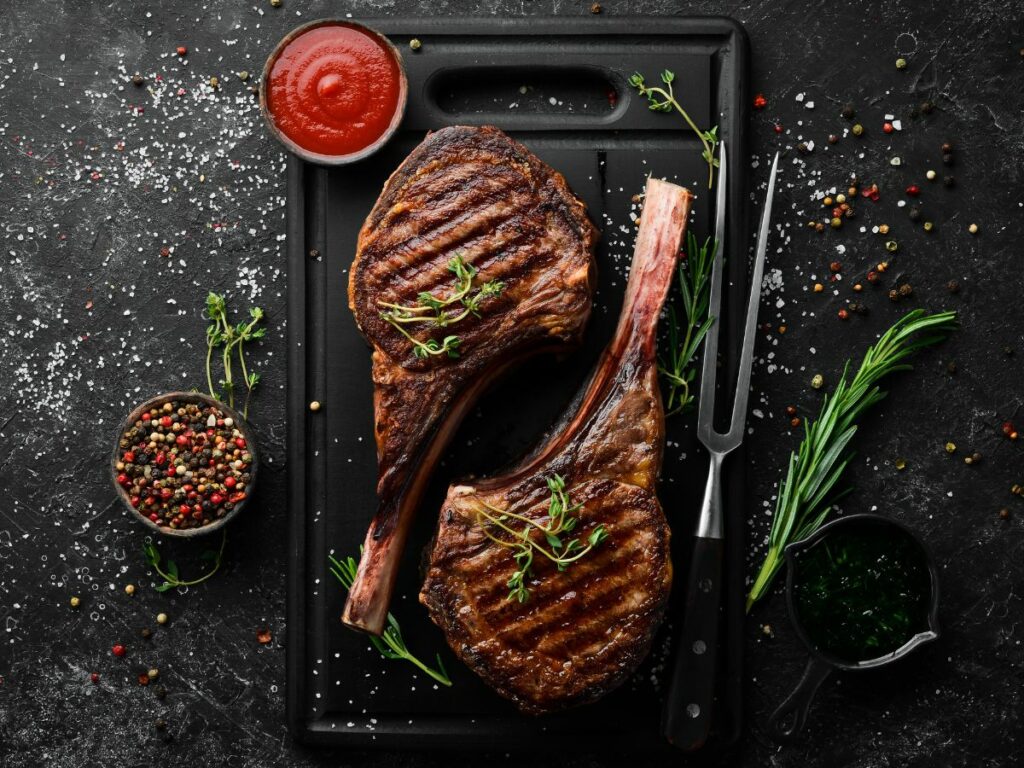
This post will highlight the differences between rib roast and ribeye to help you pick the best entree to complete your holiday meal. So, if you’re looking for a deep comparison of these two entrees, you’ve come to the right place.
Are Rib Roast and Ribeye the Same?
Rib roast and ribeye are both popular entrees, especially during special occasions like Easter and Christmas dinners. They are similar enough to cause confusion. For starters, the names both contain the word rib. This is because they are both cut from the same rib area of the cow.
Both a rib roast and a rib eye come from the cow’s rib. These delicious cuts of beef make them perfect for a big holiday feast. This meat is rich, flavorful, and has high-fat marbling. The fact that a rib roast can also be called prime rib and standing rib roast adds to the confusion, but these similar names all refer to the same cut.
A rib roast typically has two to seven bones surrounded by meat. A four-bone standing roast is a great middle size.
This can then get broken down into multiple ribeyes. In short, a ribeye steak is a smaller second cut from the rib roast.
These cuts are typically available at local grocery stores, farm direct, and online. I affiliate with US Wellness Meats because they deliver nose-to-tail dining options of grass-fed and organically raised meat with easy online shopping.
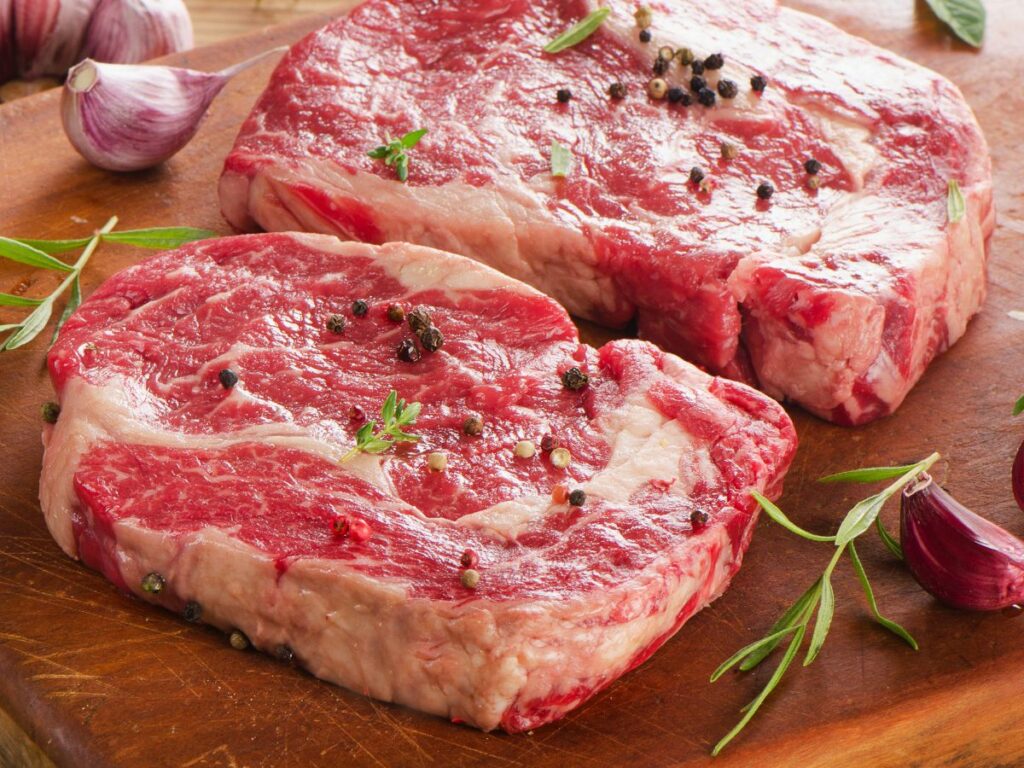
Rib Roast vs. Ribeye: What’s the Difference?
Even though the rib roast and ribeye are so similar, they have a lot of differences. Let’s take a closer look at each of them in terms of price, nutritional value, taste, cut, and more, so you can be confident in choosing the one that suits your needs.
Cut
Rib roast recipes call for the choice prime rib cut from the central part rib section of the cow. It has a heavy marbling, which is why it is one of the most sought-after parts. This cut of meat comes as bone-in or boneless prime rib.
On the other hand, ribeye steak uses the ribeye cut. The main difference is that the steak is a smaller portion taken from the larger prime rib. A ribeye steak has a round shape, like an eye, that forms after being separated from the curved bone, hence the name. Regarding size, the ribeye is smaller since it is cut from the prime rib. There is some variation in ribeyes, and some emerge from a leaner area with more muscle and less fat.
Additionally, you can buy a bone-in ribeye or one with the bone removed. I like buying bone-in cuts because they tend to hold more moisture and have extra flavor, but you pay for the weight of the bone and have to be a little more mindful of cooking it fully.
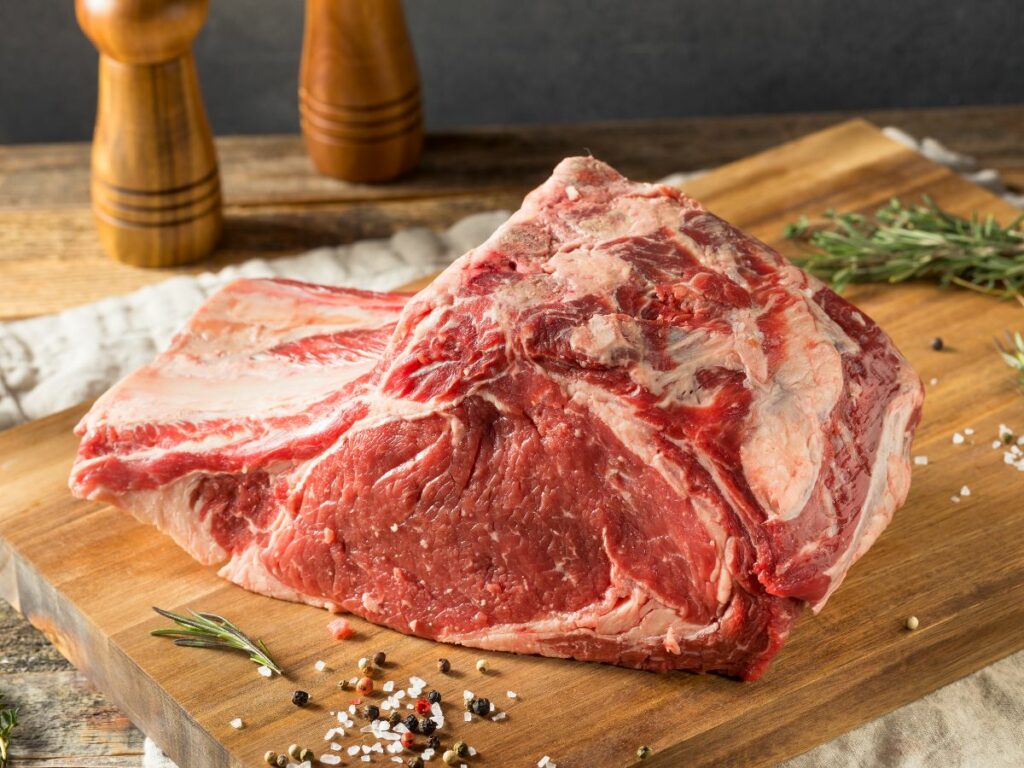
Price
If you’re torn between a standing rib roast vs. ribeye steak, price is an important factor in determining the decision. Right off the bat, a rib roast is a larger cut than ribeye, so since you’re purchasing an item with a bigger volume, be prepared for a higher cost simply because the package contains more mass.
The source and grade of beef also influence retail price. Organic, grass-fed, grass-finished beef tends to carry a higher price tag than USDA Prime and USDA Choice grades. Additionally, an independent artisanal or local butcher may be more expensive than larger corporate grocers.
Nutritional Value
Beef is an excellent source of high-quality protein that supports our health. However, its overall nutritional value varies depending on the cut.
Rib roast and ribeye’s calorie and macro counts are different. If you’re tracking macros and are choosing between prime rib roast vs. ribeye steak, I suggest using this table to help you decide.
Here’s the summary from calories-info.net:
| Nutrition (per 100 grams) | Prime Rib | Ribeye |
| Calories | 355 | 291 |
| Fat | 31.66 grams | 21.81 grams |
| Protein | 16.15 grams | 23.69 grams |
| Calcium | 9 milligrams | 11 milligrams |
| Iron | 1.7 milligrams | 2.24 milligrams |
| Magnesium | 16 milligrams | 22 milligrams |
| Sodium | 53 milligrams | 54 milligrams |
| Potassium | 263 milligrams | 260 milligrams |
| Vitamin B1 | 0.08 milligrams | 0.071 milligrams |
| Vitamin B2 | 0.13 milligrams | 0.287 milligrams |
| Vitamin B3 | 2.75 milligrams | 4.908 milligrams |
| Vitamin B6 | 0.31 milligrams | 0.477 milligrams |
| Vitamin B9 | 0.005 milligrams | 0.006 milligrams |
It’s good to know that the primary nutrients in meat are resilient to heat. So, if you’re deciding between rib eye steak vs. ribeye roast, for example, expect only minimal changes in the nutritional value of each dish.
Taste
Rib roast and ribeye are both mouthwatering. A traditional prime rib has a generous fat cap covering the top and more bone than ribeye, adding to the flavor and texture.
On the other hand, the ribeye has less rib bone and outer fat but can still have beautiful inner marbling and herby beef flavor. The tastes are very similar because both choices come from the same place on the animal.
Texture
The muscle and fat content contribute to the meat’s texture. Since prime rib and ribeye come from the same part of the cow’s body, you won’t find much difference between the textures of these cuts when raw.
There are many ways to cook beef, each imparting a different texture. Broiling or slow-roasting, for example, gives meat a different texture than grilling or pan-cooking. That said, if you’re wondering which cut has the best texture, the recipe is the biggest determining factor.
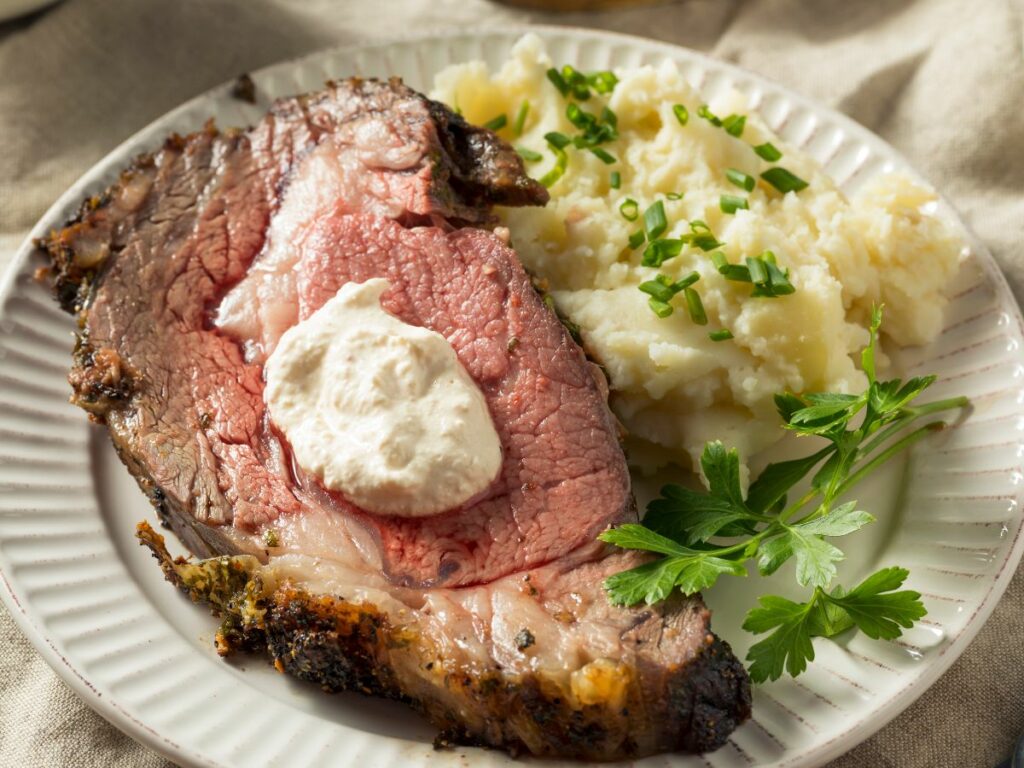
Cooking Temperature and Time
Meats require different cooking temperatures and cooking times depending on their thickness. Since rib roast and ribeye are distinct cuts of meat with different thicknesses, they need different cooking temperatures.
Roasts take longer at a low temperature, while ribeye steak typically cooks at medium to high heat for a short period. Since the ribeye is a smaller piece of meat, cooking on the stovetop with a nice sear is quicker.
My best tip for cooking meat is to invest in a quality meat thermometer. My dad gifted me one from Termoworks, and it’s been the number one best kitchen tool I’ve ever used. With this thermometer, I can cook to a precise internal temperature and no longer have any guesswork in judging if the meat is done. I’m so grateful to have more confidence and be done with the consequential disappointment of over- or undercooked meat.
Instant Read Thermometer
5.0
The Thermapen® ONE, by Thermoworks, is my favorite kitchen tool. Whether I’m grilling, baking, roasting or fermenting, this tool ensures targeted precision. Its quick response time and user-friendly design make it an indispensable companion for consistently delicious and precisely prepared food.
- One-second readings
- Accurate within ± 0.5°F (± 0.3°C)
- America’s Test Kitchen – Winner
- 5-year warranty
Cooking Methods
Again, we see a difference between a standing rib roast and ribeye steak when it comes to different ways of cooking. This is largely due to the thickness of the cuts used in these dishes not being the same.
The bones should be set vertically for a standing rib roast with a thick fat cap on the top. This standing position allows the fat to render slowly while roasting, essentially basting the meat and adding incredible flavor. Roasting is typically the most common way to cook prime rib, especially during the holidays. You can also sous vide prime rib or cook them in an air fryer.
On the flip side, ribeye steak is perfect for grilling or pan-searing. Unlike the standing rib roast, it doesn’t require long hours of cooking.
Neither cut takes a lot of marinade or fancy seasoning. Usually, a simple salt and black pepper rub with rosemary is sufficient for me. I might add horseradish sauce on the side.
Rib Roast vs. Ribeye Steak: Which is a Better Holiday Dinner Entree?
At first glance, it’s not easy to tell the difference between rib roast and ribeye, mostly because the different names sound so similar. However, when you look closely, the similarities and differences quickly become more clear. So, which of the two is the best entree for a holiday dinner?
There’s no doubt that both a standing rib roast and ribeye steak are delicious. Ultimately, the answer depends on how many people you need to feed, your budget, and your schedule.
In my opinion, the rib roast has a slight edge over ribeye because the presentation is absolutely spectacular, with top-of-the-line texture and buttery, beefy flavor. I cook a lot of ribeye steak throughout the year and like them for minor celebrations like birthdays, name days, and anniversaries. Going for a big hunk of meat like a prime rib for the biggest days of the year makes the holiday all the more special and memorable.
Furthermore, feeding a crowd with a rib roast is much easier, but you can also scale it down to a smaller serving size. As a general rule of thumb, a bone-in roast feeds two people per bone.
With this calculation, I can easily serve up to 14 people with one entree. I start with holiday appetizers, then add yummy side dishes like low-carb potatoes, stuffing, and buttermilk drop biscuits. Finally, I finish with a sugar-free holiday dessert for a complete low-carb menu.
Of course, your needs might be different. Ribeye steaks never fail to please, are quick to cook, and are ideal for serving two people.
In Conclusion
This rib roast vs. ribeye comparison shows the similarities and significant differences between the two choice cuts. Ultimately, the decision boils down to personal preference. Both cuts offer exceptional qualities, and choosing between them depends on your favorite ways of savoring a festive meal.
Whether you opt for a rib roast’s elegance or a ribeye’s versatility, rest assured that both are excellent choices for creating a memorable holiday dining experience that will impress your guests.





